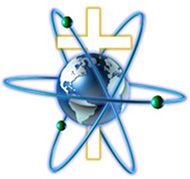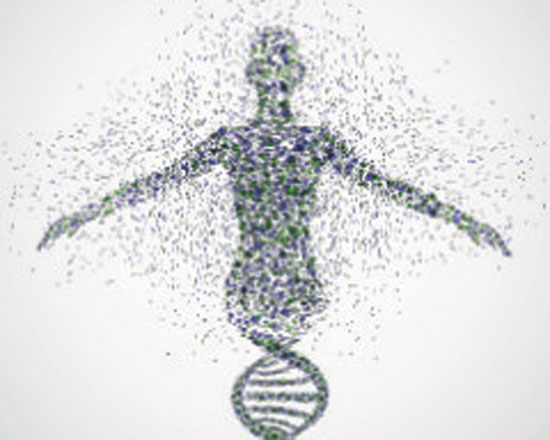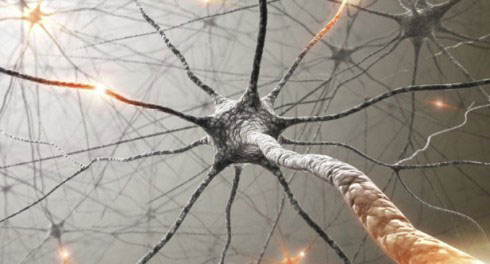Overview – what are Embryonic Stem Cells?
Embryonic stem cells are the inner cells that have been removed from newly- conceived babies, or embryos. These cells are special and they lie deep within the centre. They have to be cut out (dissected) together with the inner cell mass. These special cells lie together with others in this inner cell mass. The other cells produce the certain organs in a human person; while the special cells are considered special because they are ‘blank’ (like the blank tiles in scrabble) and have the potential to mature into anything. They are not yet committed, not yet specialised, to produce the cells of a specific organ like a brain or a heart. They still have the potential to produce different kinds of cells. Hence these embryonic stem cells are called ‘pluripotent’. They have more than one potential; they are not limited to just producing skin, bone, or heart tissue.
The goal of cutting out these cells in the inner cell mass is to eventually use these special cells to replace the unhealthy ones in adults, in order to cure certain diseases. Obtaining these cells destroys the embryo. The babies used in this way are the left-over babies in IVF clinics – he surplus babies – produced just in case one isn’t successful. (In over 99% of IVF baby attempts, surplus babies have been made.) This method was researched by Australian scientists; other scientists dissected inner cells out of 5 to 9 week embryos to obtain their cells which would later form sperm or eggs. These cells are also special or ‘pluripotent’.
Even if researchers are successful in their plan to extract these ‘blank’ cells, they must kill the surplus IVF babies in order to do so. The dissection and destruction of these babies is considered satisfactory by embryonic stem cell scientists. In defence of this process they say embryos are destroyed all the time by IUDs (intra-uterine devices to stop a pregnancy growing in the womb), and by the minipill (the progesterone only pill used especially by breast-feeding women). These examples are used to justify the dissection of embryos in the laboratory, and their destruction is part of this embryo research.
Common Arguments
made for embryonic stem cell use
made for embryonic stem cell use
- Embryos are not human beings.
- Human embryonic stem cell research will cure disease.
- Embryonic stem cells have a capacity to turn into any tissue in the body.
- Excess embryos will be destroyed; they might as well be used for some good.
- All research avenues should be used.

Why a embroyonic stem cell research
is not the answer
is not the answer
A human embryo is a human being in its very earliest stage of development. Moral relevance does not decline or increase with age. The youngest through to the eldest of the human species are equally morally relevant. It is not moral to kill one innocent human being in order to save another. There should be no preference of older human beings over younger human beings. All demand equal moral recognition, dignity and protection. Natural philosophy informs us that every living being has a soul, and that soul is the principle that gives life to the body.
A living human being has a living and eternal soul from the very first moment of its existence. Therefore, to sacrifice one or some innocent human beings for the health of others is immoral. The fusion of sperm and egg from the human father and mother at conception creates an embryo. This embryo is human, genetically distinct from both parents, self-directed and unified; whole, therefore, human. The embryo, even at its earliest stage, contains all that it requires to continue his/her development towards birth, infancy, adolescence and old age. The human embryo is, simply, a very young human being; and as a consequence, it demands moral recognition as a member of the human species.
Regenerative medicine seeks to replace diseased adult tissue with healthy adult tissue. The only use for embryonic stem cells in regenerative medicine is:
- For more research. Much research is planned for this field.
- Possible donor cells given to a damaged or diseased adult (or child). Embryo stem cells used for this purpose are not the same as the cells in the body of the person who is receiving them. They are not identical. They do not match the patients’ cells and can cause allergy or immune reactions. Donor cells from other embryo persons are called un-matched or embryo ‘non-matched’ donor tissue.
- possible donor cells taken from a ‘cloned embryo’. This is a newly made embryo that has been put together as an identical twin of the damaged or diseased adult. This new identical twin embryo is made and grown in the laboratory just to harvest its inner cells. Because their inner cells are identical to its older twin’s cells, they will ‘match’ the adult’s cells. It is hoped these will not cause an immune reaction. They are known as embryo ‘matched’ donor tissue.
As a research tool, embryonic stem cells behave differently in the laboratory (in vitro) compared to in humans (in vivo). Therefore, insights into the laboratory behaviour of the cells are not necessarily the same in practice, and we already have indirect models of cell behaviour available. Embryonic stem cells are not useful in non-matched adults, since they require life-long immunosuppressive therapy with considerable side effects. Therefore, embryonic stem cells are considered most useful if derived from cloned adult stem cells.
Unfortunately, human cloning produces cancerous and aged cells because the DNA of the embryo starts growing with DNA that is already as old as the original donor. Aged DNA combined with unstable embryo cells, poses many new health risks for a person receiving the embryo stem cell treatment. These clinical problems posed by regenerative medicine using embryo cells are widely acknowledged.
Much of the language surrounding embryonic stem cell research focuses on “hope” and potential. Millions of dollars in monetary support and a celebrity A-list of proponents have done little to produce a result from these unethically-obtained cells. The main selling point of embryonic stem cells is that they are immature, so to speak, and have not decided what type of cell they are going to be. Thus they could, potentially, be encouraged to develop into whatever the scientist desires. This desired malleability comes with an undesired side effect: unpredictability.
Scientists at the prestigious Mayo Clinic write that, “Embryonic stem cells also could grow irregularly or specialise in different cell types spontaneously (like tumors)…Embryonic stem cells also might trigger an immune response in which the recipient’s body attacks the stem cells as foreign invaders, or simply fail to function normally, with unknown consequences.” Mayo Clinic, 3/2013.
Catholic teaching on the use of embryonic stem cells:
Encyclicals:
“Human life is sacred from its very inception, it reveals the creating hand of God.”
Pope John XXIII, Mater et Magistra, AAS 53 (1961)
“In fact, just as man does not have unlimited dominion over his body in general, so also, with particular reason, he has no such dominion over his generative faculties as such, because of their intrinsic ordination towards raising up life, of which God is the principle.”
Pope Paul VI: Humanae Vitae [13]. 1968
Pope Benedict XVI in Donum Vitae 1987:
“This Congregation [for the Doctrine of the Faith] is aware of the current debates concerning the beginning of human life, concerning the individuality of the human being and concerning the identity of the human person. The Congregation recalls the teachings found in the Declaration on Procured Abortion: “From the time that the ovum is fertilized, a new life is begun which is neither that of the father nor of the mother; it is rather the life of a new human being with his own growth. It would never be made human if it were not human already. To this perpetual evidence…modern genetic science brings valuable confirmation. It has demonstrated that, from the first instant, the program is fixed as to what this living being will be: a man, this individual-man with his characteristic aspects already well determined. Right from fertilization is begun the adventure of a human life, and each of its great capacities requires time…to find its place and to be in a position to act.” (25) This teaching remains valid and is further confirmed, if confirmation were needed, by recent findings of human biological science which recognise that in the zygote resulting from fertilization the biological identity of a new human individual is already constituted. Certainly no experimental datum can be in itself sufficient to bring us to the recognition of a spiritual soul; nevertheless, the conclusions of science regarding the human embryo provide a valuable indication for discerning by the use of reason a personal presence at the moment of this first appearance of a human life: how could a human individual not be a human person? The Magisterium has not expressly committed itself to an affirmation of a philosophical nature, but it constantly reaffirms the moral condemnation of any kind of procured abortion. This teaching has not been changed and is unchangeable. (26) Thus, the fruit of human generation, from the first moment of its existence, that is to say from the moment the zygote has formed, demands the unconditional respect that is morally due to the human being in his bodily and spiritual totality. The human being is to be respected and treated as a person from the moment of conception; and therefore from that same moment his rights as a person must be recognised, among which in the first place is the inviolable right of every innocent human being to life.”
Catechism of the Catholic Church
CCC #362
II. Body and Soul but Truly One
362. The human person, created in the image of God, is a being at once corporeal and spiritual. The biblical account expresses this reality in symbolic language when it affirms that “then the LORD God formed man of dust from the ground, and breathed into his nostrils the breath of life; and man became a living being.”

Famous Quotes
President George W. Bush Aug. 9, 2001, in an address to the nation on stem cell research:
“There’s just too many areas that are inconclusive out there for us to get on a slippery slope to say we should take life in order to enhance life.”
“The moral issue does not disappear just because the embryos are very small or because they are no longer wanted for reproductive purposes: Because they are living human embryos, destroying them is not a morally neutral act. Just as no society can afford to be callous to the needs of suffering humanity, none can afford to be cavalier about how it treats nascent human life.”
Quick Facts
The Catholic church is not against adult stem cell research
For the Catholic Church, the issue of stem cell research is not one between science and ethics, much less between science and religion. Rather, the Church asks us to decide how our society will pursue scientific and medical progress. The ‘greater good’ cannot come from directly taking innocent human lives.
 There is no moral objection to research and therapy which do NOT involve harm to human beings at any stage of development and is conducted with appropriate informed consent.
There is no moral objection to research and therapy which do NOT involve harm to human beings at any stage of development and is conducted with appropriate informed consent.
Adult stem cells (that is, stem cells extracted from adults rather than embryos) and umbilical cord blood have been shown to produce cells that can benefit patients suffering from heart disease, corneal damage, sickle cell anemia, multiple sclerosis and many other diseases.
The Catholic Church has been, and will continue to be, among the leading supporters of ethically responsible advances in the medical use of adult stem cells: “Methods which do not cause serious harm to the subject from whom the stem cells are taken are to be considered licit. This is generally the case when tissues are taken from: a) an adult organism; b) the blood of the umbilical cord at the time of birth; c) fetuses who have died of natural causes.” Dignitas Personae [32].
Adult stem cell research successes
Adult stem cells, whether obtained from the individual they are to be used in or from a donor, have had great success in the last 40 years.
One of the more common uses of adult stem cells is in bone marrow transplant. This is used to treat blood cancers such as leukemia. Bone marrow contains adult stem cells which can be harvested from either the sick individual or a donor without significant harm.
 Research continues on ways to combat heart disease. Scientists from the University of Minnesota have been making headway using adult stem cells to create a new heart. Osiris Therapeutics of Maryland is using adult stem cells in diabetic research.
Research continues on ways to combat heart disease. Scientists from the University of Minnesota have been making headway using adult stem cells to create a new heart. Osiris Therapeutics of Maryland is using adult stem cells in diabetic research.
Neostem, of New York, with the blessing of the Vatican, is studying adult stem cell use in heart disease, autoimmune disorders and tissue regeneration.
Adult stem cell transplants are also widely used to treat such diseases as anemias, leukemias, lymphomas, and other cancers, spinal cord injuries, Parkinson’s disease, multiple sclerosis, diabetes, lupus, Crohn’s disease, ocular degeneration, blindness, heart disease, leukemia, non-Hodgkin’s lymphoma, aplastic anemia, and sickle cell anemia.
Suggested articles for further reading and links
- Keane, Eamonn; “The Brave New World of Therapeutic Cloning” booklet 2nd revised and expanded edition.
- http://ncronline.org/news/vatican/vatican-gets-behind-adult-stem-cell-research
- http://www.stemcellresearch.org/
- http://www.cloninginformation.org/
- http://www.councilforresponsiblegenetics.org/
- http://www.neostem.com/







